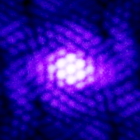|
The fate of Red Dwarfs.
|
|
| davidbuddy9 | Date: Thursday, 11.06.2015, 02:33 | Message # 1 |
|
Observer
Group: Newbies
 Pirate
Pirate
Messages: 6
Status: Offline
| So, at school today we were told that all stars the mass of the sun and smaller dies as White Dwarfs. I honestly study space for fun and I prove the teacher wrong about a lot of things in the subject of space but this I'm not so sure about this one. Seeing that Red dwarfs are also in the "dwarf" category I would expect them to start cooling off if fusion stops and since they are convective (which in my understanding mean that the gasses inside the star are constantly moving around) they should reduce "swelling" (That is the term we used in class for stars turning into giants) so how do Red dwarfs die? I know at this point there deaths are only Hypothetical now as they last trillions of years but you know I'm just asking to see what other people think.
Edited by davidbuddy9 - Thursday, 11.06.2015, 02:34 |
| |
| |
| parameciumkid | Date: Thursday, 11.06.2015, 04:43 | Message # 2 |
 Explorer
Group: Users
 United States
United States
Messages: 277
Status: Offline
| Your teacher is wrong.
Stars of similar mass to the Sun include yellow "dwarfs", orange dwarfs, and some red dwarfs. These convert hydrogen into helium, but as the concentration of hydrogen in the core decreases, the pressure generated by fusion decreases as well, causing the star to shrink and its core to grow hotter. Eventually, there is insufficient hydrogen to balance gravity, and the star shrinks until its core temperature becomes sufficient to fuse helium into carbon and oxygen. Since this releases much more energy, the core becomes much hotter and thus the outer layers of the star expand, where the surface is far from the core and becomes colder, turning red - the star becomes a red giant. When the helium runs out, since the star is not massive enough to fuse carbon and oxygen into anything, its core shrinks until degeneracy pressure prevents it from getting smaller, forming a white dwarf, while the outer layers disperse into space.
Stars much smaller than the Sun include some red dwarfs and brown dwarfs. These are hot, and in some cases do produce some fusion in the core, but are not able to generate enough pressure to counteract gravitational contraction nor enough thermal energy to maintain their temperature. Thus they slowly radiate their energy into space over many billions of years, growing colder and redder until they cease to emit visible light and resemble a very large Jupiter-like planet. Since it does not illuminate itself and does not necessarily get illuminated by another star (though it could if it happened to have a companion star), it appears dark and is thus known as a black dwarf.
Confusingly, white dwarfs also gradually cool and form objects called black dwarfs, but these are much smaller and denser and are made of different substances (carbon rather than hydrogen). Astrophysicists generally do not believe the universe is old enough for any of this "other" kind of black dwarf to have formed yet.
Intel HD Graphics 4000 ;P
|
| |
| |
| Donatelo200 | Date: Thursday, 11.06.2015, 05:20 | Message # 3 |
|
Explorer
Group: Users
 United States
United States
Messages: 261
Status: Offline
| @ parameciumkid you are mostly correct. However brown dwarf's fate is different than actual red dwarf star's. I'm referring to stars below 0.25 solar masses (above 0.25 they go red giant like our sun) and undergoing hydrogen fusion which is typically above 0.075 solar masses. These stars below 0.25 solar masses actually get hotter and hotter with age like most stars. Except they don't expand and actually contract forming a blue dwarf star near their death. (weird I know) Then once all the hydrogen is burned they contract further forming a white dwarf and then after even more time cool to a black dwarf.
CPU: Intel Core i7-4790K
GPU: Nvidia GTX 1080
SSD: Samsung 850 Evo 250GB
HDD: Toshiba DT01ACA200 2TB
HDD: WD Blue 1TB (2012)
RAM: Unknown 16G-D3-1600-MR 2x8GB
MBD: MSI Z97S SLI Krait Edition (MS-7922)
|
| |
| |
| Watsisname | Date: Thursday, 11.06.2015, 07:59 | Message # 4 |
 Galaxy Architect
Group: Global Moderators
 United States
United States
Messages: 2613
Status: Offline
| Quote parameciumkid (  ) Stars of similar mass to the Sun include yellow "dwarfs", orange dwarfs, and some red dwarfs. These convert hydrogen into helium, but as the concentration of hydrogen in the core decreases, the pressure generated by fusion decreases as well, causing the star to shrink and its core to grow hotter.
Minor nitpick, but this is not quite right. (Much of the rest is good though) 
If it was correct, then the Sun would be shrinking over its main sequence life-time. But, it has been and continues to expand. It is also growing hotter in surface temperature and more luminous. So in the interest of understanding stellar interiors and their evolution, here's what's going on:
In sun-like stars, the fusion byproducts (helium) accumulate in the core, raising the average molecular mass. It can be shown that this increases the pressure at the core, which increases the temperature, which increases the reaction rate (fusion has an extremely strong dependence on temperature). So, luminosity goes up, and in order for the star to maintain hydrostatic equilibrium, it must also expand. Think of it as the increased radiation pressure pushing out the outer layers.
What about with stars becoming giant? This happens when so much helium has accumulated in the core that fusion can no longer occur there. Instead, the fusion zone shifts to a thin shell of hydrogen surrounding the core. Since this puts the fusion zone closer to the surface, it puffs up the star, again so that hydrostatic equilibrium is maintained, and the star becomes a giant. There may also be a time when the core pressure and temperature is sufficient to "ignite" it (an event called the helium flash). In more massive evolved stars there may be an onion-skin like core of shells fusing various elements, surrounded by a huge convective zone.
Quote davidbuddy9 (  ) since they are convective (which in my understanding mean that the gasses inside the star are constantly moving around) they should reduce "swelling"
All stars are convective at least somewhere.  Energy from the star's fusion escapes by one of two basic mechanisms: convection (think of boiling water, bringing heat upward by the physical motion of the fluid), or radiation (where the energy flow is primarily carried by photons). The Sun has a radiation zone around its core, and then a convective outer layer, which is why the surface shows granulation. Giant stars are convective for an greater portion of their bulk, and have enormous convection cells which distort the shape of the star in funny ways. Energy from the star's fusion escapes by one of two basic mechanisms: convection (think of boiling water, bringing heat upward by the physical motion of the fluid), or radiation (where the energy flow is primarily carried by photons). The Sun has a radiation zone around its core, and then a convective outer layer, which is why the surface shows granulation. Giant stars are convective for an greater portion of their bulk, and have enormous convection cells which distort the shape of the star in funny ways.
What's going on with very low mass stars then? They are actually convective throughout their entire bulk, so the helium produced by fusion does not concentrate in the core. This has all sorts of consequences for their evolution. They never undergo fusion in shells like the heavier stars do, and they can maintain a fairly steady core fusion rate with an efficient cycling of the whole mass of the star. So despite their smaller masses, they remain fusing for much longer timescales.

|
| |
| |
| davidbuddy9 | Date: Monday, 15.06.2015, 22:29 | Message # 5 |
|
Observer
Group: Newbies
 Pirate
Pirate
Messages: 6
Status: Offline
| So what I am assuming is that the star contracts into a blue dwarf when it runs out of fuel if it is under 0.25 Solar Masses but would the star since it is so hot able to fuse Helium into Carbon and Oxygen?
|
| |
| |
| Donatelo200 | Date: Tuesday, 16.06.2015, 02:14 | Message # 6 |
|
Explorer
Group: Users
 United States
United States
Messages: 261
Status: Offline
| Nope it would not fuse its helium. Stars that small never get hot enough in the core to fuse helium.
CPU: Intel Core i7-4790K
GPU: Nvidia GTX 1080
SSD: Samsung 850 Evo 250GB
HDD: Toshiba DT01ACA200 2TB
HDD: WD Blue 1TB (2012)
RAM: Unknown 16G-D3-1600-MR 2x8GB
MBD: MSI Z97S SLI Krait Edition (MS-7922)
|
| |
| |
| Watsisname | Date: Tuesday, 16.06.2015, 02:31 | Message # 7 |
 Galaxy Architect
Group: Global Moderators
 United States
United States
Messages: 2613
Status: Offline
| Nah, they never get beyond hydrogen fusion. Helium fusion requires vastly more extreme conditions.
I'm also not clear about <0.25 solar mass stars contracting into blue dwarfs. I'm having a difficult time finding information on this. Donatello, can you source it? (I wish I still had my simulator for stellar evolution and internal conditions/structure; it could answer this easily.)

|
| |
| |